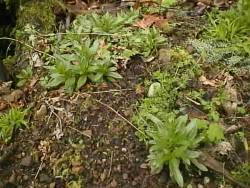How to Grow and Care for a Carnivorous Butterwort Plant
Pinguicula
| November 28, 1999 The Butterwort family of plants (Pinguicula) is another species of insectivore. The plants themselves are fairly plain in appearance. Their name is derived by the buttery, sticky, greasy mucilage which covers their leaves. Their extremely pretty flowers, however, usually make up for these shortcomings. The Pinguicula family of plants capture their prey using a fly paper approach. Insects that are attracted to the plant become stuck in the leaf's sticky coating. Then they are digested through the action of the enzymes in the plant's slime, and become nutrients for the plant. On certain varieties of Butterworts, the leaf margins slowly fold over and entrap the insect before the digestive process begins. Butterwort plants are suitable for growing in unsealed terarriums. |

|
|
|
Growing Requirements of Butterwort Plants
|
Pinguicula caerulea and P. lutea are most often found on drier ground, but should never be allowed to completely 'dry' out.
Before you leave please read How to Grow Carnivorous Insectivores.
|
Search The Garden Helper:
